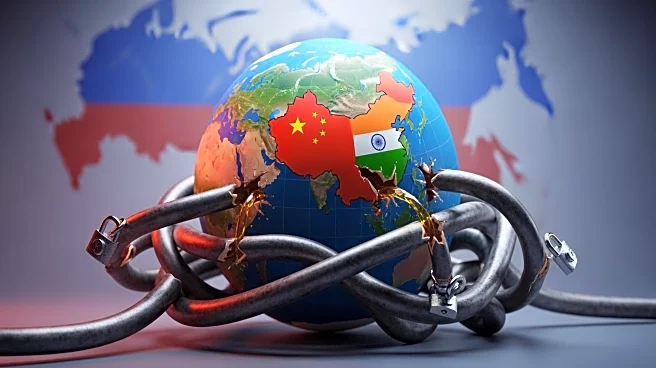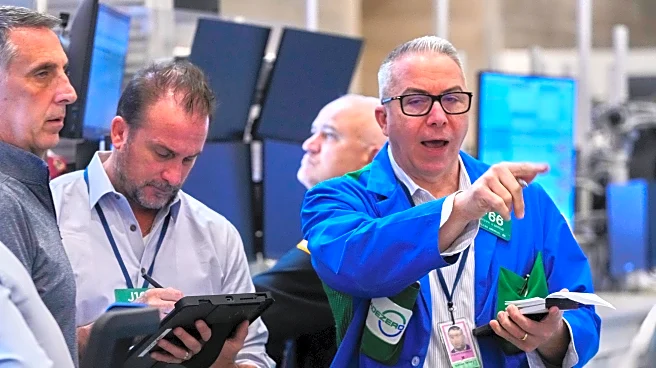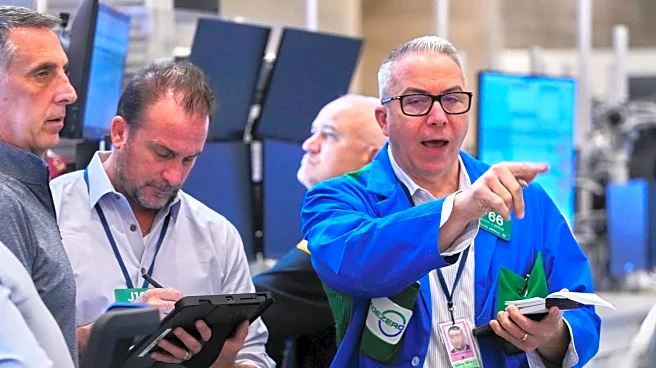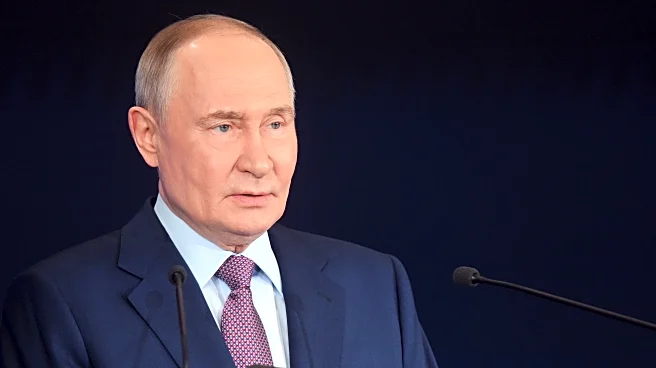What's Happening?
The article discusses the perceived inefficacy of tariffs as a tool for trade protection, particularly under President Trump's administration. It highlights the arguments for and against the use of tariffs, noting that they may not be as effective as intended
in protecting domestic industries. The piece is part of an educational program aimed at teaching students about economic policies, specifically focusing on the impact of tariffs on trade. The article uses the example of a 50% tariff on India's packaged medicines to illustrate the potential consequences on price, quantity, consumer and producer surpluses, and tariff revenue. It also explores the broader economic implications, such as changes in price levels and real GDP in the U.S. economy.
Why It's Important?
The discussion on tariffs is crucial as it affects U.S. trade policy and economic strategy. Tariffs can lead to higher prices for consumers and reduced competitiveness for domestic producers, potentially harming the economy. The analysis provided in the article suggests that tariffs might not achieve the desired protectionist outcomes and could instead lead to inefficiencies. This has implications for U.S. exporters, who may face retaliatory tariffs from other countries, affecting their revenues. Understanding the impact of tariffs is essential for policymakers and businesses as they navigate international trade relations and economic growth strategies.
What's Next?
The article implies that there may be ongoing debates and discussions about the effectiveness of tariffs as a trade policy tool. Policymakers might need to reconsider their approach to trade protection, possibly exploring alternative strategies that do not involve tariffs. Businesses affected by tariffs may seek to adapt by finding new markets or adjusting their supply chains. Additionally, there could be further analysis and studies conducted to assess the long-term impacts of tariffs on the U.S. economy and its trade relationships.
Beyond the Headlines
The use of tariffs raises ethical and legal questions about fair trade practices and international relations. There is a cultural dimension as well, as tariffs can affect global perceptions of the U.S. as a trade partner. Long-term shifts could include changes in global supply chains and increased emphasis on multilateral trade agreements. The educational aspect of the article suggests a need for greater public understanding of economic policies and their impacts.















